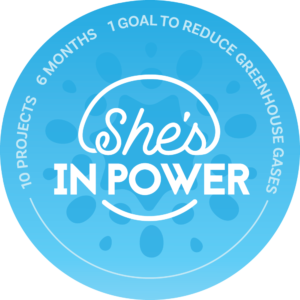
2020’s batch of Power Projects included three partnerships with Fort Collins Utilities and the CSU Energy Institute to help our community plan and implement greater solar energy use.
Ishita Kekare and Archana Sajeev measured the impact of installing PV solar systems on homes in Fort Collins. They found that energy consumption after PV installation remained essentially flat (1.5% increase for Kekare and 3% decrease for Sajeev) and more than half of the solar energy generated was transferred to the city’s energy grid vs. used by PV system owners (54% was returned to the grid for Kekare and 58% for Sajeev). This greater understanding of residential energy use and how much PV-generated energy is being transferred to the grid will allow Fort Collins Utilities to increase PV installations to support the city’s climate action plan.
Giuliana Seretti developed a new modeling process that will allow the City of Fort Collins to have a more accurate estimate of our community’s PV system generation. The current model provides estimates on a system-by-system basis. With approximately 2,000 PV systems to account for, making accurate, community-wide PV output estimates is a challenge. Seretti’s updated modeling method will give the city the big-picture view it needs, and at near real-time.
“These projects were all quite technical in nature and led by two master’s candidates and a senior Bachelor of Science student, all in engineering,” said John Bleem of JRB Energy Solutions and the CSU Energy Institute, who was a mentor for all three Power Projects. But any young woman who is interested in climate action is welcome. “Future She’s in Power projects can be quite different, less technical and exploring broader topics. We want to engage young people in STEM and clean energy.”



